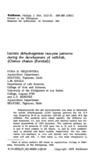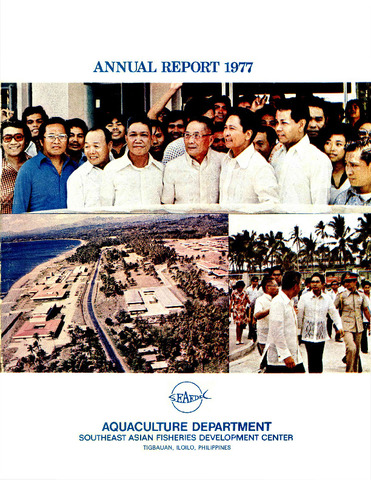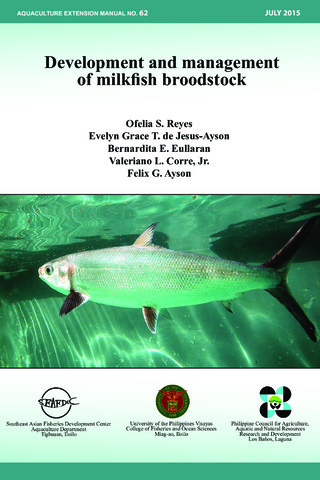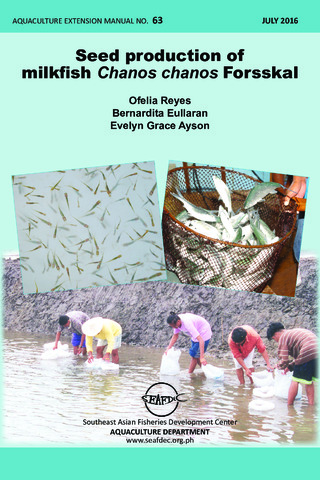Lactate dehydrogenase isozyme patterns during the development of milkfish, (Chanos chanos (Forskal))
Share
Abstract
Polyacrylamide disc gel electrophoresis was done to determine the lactate dehydrogenase (LDH) isozyme patterns for fry (5-3 mg), fingerling (6-12 g), pond-size (150-250 g) and adult (6-9 kg) milkfish. The patterns were tissue specific; the different tissues examined, viz., eye, liver, heart, and skeletal muscle had different expressions of LDH isozymes. The resolved patterns appeared to be products of LDH gene loci A, B, and C. Subunits A and B were present in all tissues. A4 and B4 were predominant in skeletal and heart muscle, respectively; the two associated non-randomly in vivo and formed only the heteropolymers A3B and AB3. A liver band, L4, was most conspicuous in the fingerling, pond-size, and adult; it was assumed to be coded by locus C. A negatively charged band, X4, was detected in fully developed ovary and in fry homogenized as whole individuals, but it could not be resolved in tissues of fingerling.
Six-mo old stunts and 3-mo old fingerlings had similar LDH patterns for all tissues examined. The patterns for 11-mo old stunts and fingerlings also were similar but the one for the eye of the former was the same pattern resolved for the eye of adults.
There was no change in the LDH isozyme patterns of milk fish stunted for 6 mo under different salinity levels (0-5, 15-20, 32-35 ppt).
Suggested Citation
Requintina, P. D., Engle, L. M., & Benitez, L. V. (1981). Lactate dehydrogenase isozyme patterns during the development of milkfish, (Chanos chanos (Forskal)). Kalikasan, The Philippine Journal of Biology , 10(2-3), 289-299. http://hdl.handle.net/10862/1118
Subject
Taxonomic term
Collections
- AQD Journal Articles [1215]
Related items
Showing items related by title, author, creator and subject.
-
Annual report 1977
Southeast Asian Fisheries Development Center, Aquaculture Department (Aquaculture Department, Southeast Asian Fisheries Development Center, 1978) -
Development and management of milkfish broodstock
Reyes, Ofelia S.; de Jesus-Ayson, Evelyn Grace T.; Eullaran, Bernadita E.; Corre Jr., Valeriano L.; Ayson, Felix G. (Aquaculture Department, Southeast Asian Fisheries Development Center, 2015)The manual provides developed and refined techniques for collection and transport of spawned eggs and larvae, as well as larval rearing. It also describes the necessary facilities for maintaining milkfish broodstock. Guidelines ... -
Seed production of milkfish Chanos chanos Forsskal
Reyes, Ofelia; Eullaran, Bernadita; Ayson, Evelyn Grace (Aquaculture Department, Southeast Asian Fisheries Development Center, 2016)A 26-page manual describing the site selection, hatchery design, spawning, larval rearing, natural food production, and economic analysis for milkfish.






